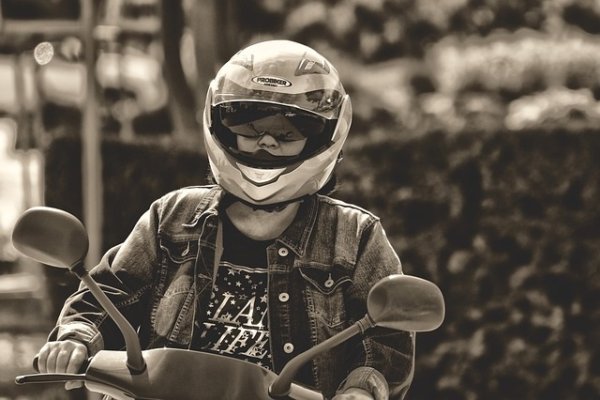
If you love words like I do, you probably cringe when you read something like “practice situational awareness!” I guess if I had to use a better expression it would be “Pay attention to what’s going on around you!”
This image above is one of my favorites. That young woman could walk right off a curb, or into the arms of a stranger, without even realizing it!
OK, now let’s add a second image to help our story. Imagine this driver cruising right up beside the woman in the first picture, grabbing her phone and speeding off!

Have you heard about the Moped Muggers? Phones are being snatched from purses, from pockets and right out of people’s hands — often by thieves on skateboards or scooters.
As one newscaster put it, “You wouldn’t go out on the street waving five $100 dollar bills in your hand, would you?” (Time to update that figure to more like six or seven $100 bills, eh?)
Situational Awareness will save you.
Being aware will save you from losing valuable items. It will save you from embarrassing mistakes. It could also save your life in an emergency by giving you a head start on decision making.
You can train yourself and your kids to be more observant.
For example, when you go into a building, note the number of people you see, where they are and what they are wearing. (Try to do this unobtrusively, of course!) Notice the number of doors to the room or exits from the building.
When you get back outside, quiz yourself and the kids on those details!
Here’s another example. If you find yourself waiting for a train or a bus, take a closer look at people around you. Try predicting where they might be going or what they are planning to do. If your timing is right, you may actually be able to see if your prediction was accurate.
These exercises can be fun. The most important result? You’ll find yourself getting better at noticing when and why people “just don’t fit.”
When things don’t look or feel “right,” trust your instincts and take action.
At that point, your first action may be to simply move away from the uncomfortable situation. You can go further and report your concerns to authorities. (“See something, say something.”)
Either way, you have taken a move to protect yourself from possible danger.
Paying attention to what goes on around you isn’t hard. But it surely is essential to being prepared!
Virginia
Your Emergency Plan Guide team
P.S. Response to our Advisories about Situational Awareness has been so great that we added a lot more on the topic in our Q&A Mini-Series booklet, Personal Safety. Situational Awareness starts off the second part of the book, and there are several more “exercises” for practicing with your kids. Perfect for getting a conversation started on being responsible for your own safety!
Don't miss a single Advisory.
Thank you for subscribing.
Something went wrong.
